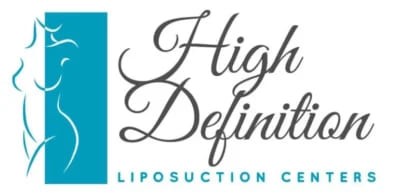Introduction: Liposuction Aftercare
Liposuction aftercare is integral to a successful outcome. Several treatable side effects of liposuction must be managed after liposuction to avoid more permanent complications that include hyperpigmentation, skin compromise, and scarring. Immediately following liposuction, the soft tissues will experience drainage of plasma fluid from leaky vessels. This fluid is the water portion of what we refer to as blood. This drainage is also accompanied by actual red blood cells and proinflammatory cells. The goal of liposuction aftercare is to limit the leakage of not only the plasma fluid but also red blood cells and pro-inflammatory cells.
Management of Plasma Fluid
Restricting plasma fluid is important since it will result in increased pressure on the skin. Since liposuction already compromises blood flow to the skin, further pressure induced by swelling can be detrimental. As such, the use of a compression garment in liposuction aftercare is a critical component of a successful outcome. Avoiding leakage of red blood cells is also important as red blood cells that leak get stuck in the soft tissues and subsequently pop causing staining of the skin from a molecule called hemosiderin. Hemosiderin staining will result in hyperpigmentation that can compromise your outcome. Finally, avoiding an influx of pro-inflammatory cells is important as it will avoid activation of a pro-inflammatory state that results in unnecessary scarring.
Dressing Care
Appropriate dressings are also critical in liposuction aftercare. These include the application of Xeroform which has several compounds such as bismuth that are soothing to the skin cells. Bacitracin ointment is also applied and provides an anti-microbial compound that will prevent inadvertent skin infection. If patients demonstrate skin bruising during surgery, then hydrocortisone ointment is applied to counter pro-inflammatory cells from further activating an inflammatory reaction.
Monitoring Skin Vascularity
Postoperative skin compromise must be detected immediately to avoid permanent injury. Nitro paste can be used focally on areas of skin compromise in an attempt to dilate the local microvessels to encourage increased blood flow. Hyperbaric oxygen has also been recommended in the early postoperative period in cases of skin compromise. Unfortunately, this treatment does require a more arduous commitment to travel to the chambers, two sessions daily, for several days. Moreover, we have observed better success and compliance with the use of Nitropaste alone.
Lymphatic Massage
Lymphatic massages are an important component of liposuction aftercare. Patients should undergo lymphatic messages daily or every other day for a period of 1 to 2 weeks depending on the extent of liposuction. Lymphatic messages serve to drain any leakage of plasma fluid in the early postoperative period until the soft tissues heal back together. Lymphatic massages are even more critical in patients undergoing high-definition liposuction. These patients often have highly defined muscle outlines that need to be maintained by keeping gulleys between muscle junctions empty of settling, residual fat cells. Moreover, regular lymphatic messages allow patients to be inspected frequently to manage any unexpected side effects.
Liposuction Aftercare Overview
The initial liposuction procedure is only one part of the journey to your desired contouring outcome. Diligent aftercare in the weeks and months following your procedure is imperative for proper healing and best results. Learning what to expect and implement during your liposuction recovery ensures the process goes smoothly.
Why is Liposuction Aftercare So Critical?
The liposuction aftercare period spanning at least 6-8 weeks post-op allows your body time to (Rotunda et al., 2021):
- Form new blood vessels to support treated areas
- Deposit replacement fibers like collagen and elastin
- Enable new skin adherence to freshly contoured areas
- Allow swelling and inflammation to fully subside
- Metabolize and eliminate disrupted fat cell debris
Rushing through aftercare could compromise results through fluid buildup, contour irregularities, and poor skin retraction.
What Supplies Do I Need for Post-Op Liposuction Care?
To properly care for incision sites and control swelling, have the following supplies ready at home:
- Compression garments – Worn 24/7 for first 2 weeks, then part-time
- Antibacterial soap – For gentle wound cleaning
- Barrier cream – Protects irritated or broken skin
- Silicone sheeting – Minimizes scarring
- Arnica cream – Reduces bruising and swelling
- Pain medication – For managing discomfort as needed
- Skin moisturizer – Gentle, fragrance-free formula
- Healthy foods – To support healing with good nutrition
Follow all specific product recommendations from your surgeon as well.
Guidelines for Changing Dressings After Liposuction
Expect to change dressings:
- First time 24 hours after surgery
- Then every day for the first week
- Switch to every other day the second week if minimal drainage
- Eventually, transition to keeping uncovered
Change more often if leaking significantly. Always wash your hands thoroughly before and after.
How Should I Clean Incision Sites After Liposuction?
Gently cleanse wounds daily once dressings are removed with:
- Mild antibacterial soap and water (Momeni et al., 2021)
- Avoid hydrogen peroxide or alcohol
- Pat dry with a clean towel
- Apply a thin layer of ointment if directed
- Cover with new dressing or leave exposed per surgeon’s advice
Keep the area dry when showering by covering it with plastic wrap. Monitor for signs of infection and report any concerns promptly.
When Can I Resume Showering After Liposuction?
You may shower:
- After 48 hours if wounds are sealed and protected from moisture
- Should keep incisions covered and limit time to 10 minutes
- May sponge bathe until dressings come off around 5-7 days
- Can wash the treated area gently with antibacterial soap around 2 weeks
- Avoid soaking in baths or swimming until cleared by the surgeon
Carefully pat the area dry and reapply dressings or compression garments after washing up.
How Should I Handle Swelling After Liposuction?
To minimize post-op liposuction swelling:
- Wear your compression garments consistently as prescribed (Almeida et al., 2021)
- Keep the treated area elevated above your heart when able
- Apply cool compresses for the first 72 hours, then switch to light warmth
- Gently massage the area in the direction of lymph drainage
- Increase fluid intake and consume anti-inflammatory foods
- Move and do light walking around the house
Notify your surgeon if excessive swelling accompanied by pain, heat, or redness occurs, as this may indicate a complication needing attention.
What is Recommended for Pain Management After Liposuction?
Options for managing liposuction pain include:
- Oral medication such as NSAIDs, acetaminophen, or prescription narcotics (Momeni et al., 2021)
- Applying topical numbing creams containing lidocaine
- Trying thermotherapy techniques like warm compresses
- Gentle lymphatic drainage massage
- Wearing compression garments consistently
- Staying mobile with gentle short walks
Avoid consuming alcohol while taking prescription pain relievers. Report any severe pain not controlled with medication promptly.
When Can I Return to Work and Exercise After Liposuction?
Guidelines for resuming activity (Rotunda et al., 2021):
- Deskwork or sedentary jobs: 5-7 days
- Manual labor or strenuous jobs: 2-3 weeks
- Light housework: 1-2 weeks
- Regular exercise: 4-6 weeks
- Contact sports: 6 weeks minimum
Increase activity gradually. Avoid anything straining the treatment area or raising heart rate significantly initially.
What Aftercare Steps Maximize Liposuction Results?
Other aftercare tips for optimal liposuction results include:
- Consistently wearing your compression garment
- Keeping follow-up appointments as scheduled
- Protecting incisions from sun exposure
- Massaging treated areas to smooth contour
- Avoiding weight gain and yo-yo dieting
- Not undergoing major weight loss after the procedure
- Managing any conditions like diabetes optimally
Pregnancy should also be avoided for 6 months post-liposuction for best results.
What Should I Watch for During Liposuction Recovery?
Contact your surgeon promptly if experiencing:
- Excess pain not relieved by medication
- Significant swelling, redness, heat or pus
- Fever over 100°F
- Bleeding that will not stop
- Blot clots in legs or lungs
- Urinary retention problems
- Excess fluid leaking from incisions
- Any signs of infection
Serious complications are rare with appropriate aftercare but require urgent evaluation when they arise.
Conclusion: Liposuction Aftercare
The liposuction procedure may take just hours, but the complete transformation unfolds gradually over the recovery period of many ensuing weeks. Closely following your surgeon’s customized aftercare protocol speeds healing, reduces risks of complications, and ensures your end result matches the initial vision. Being diligent with every aspect of liposuction aftercare is key to safely becoming your best version.
In summary, liposuction aftercare is an important component of liposuction surgery. Patients who are not willing to comply with liposuction aftercare may be considered poor candidates for this surgery. If you would like to receive more information regarding liposuction aftercare, please contact one of our centers for further information.

